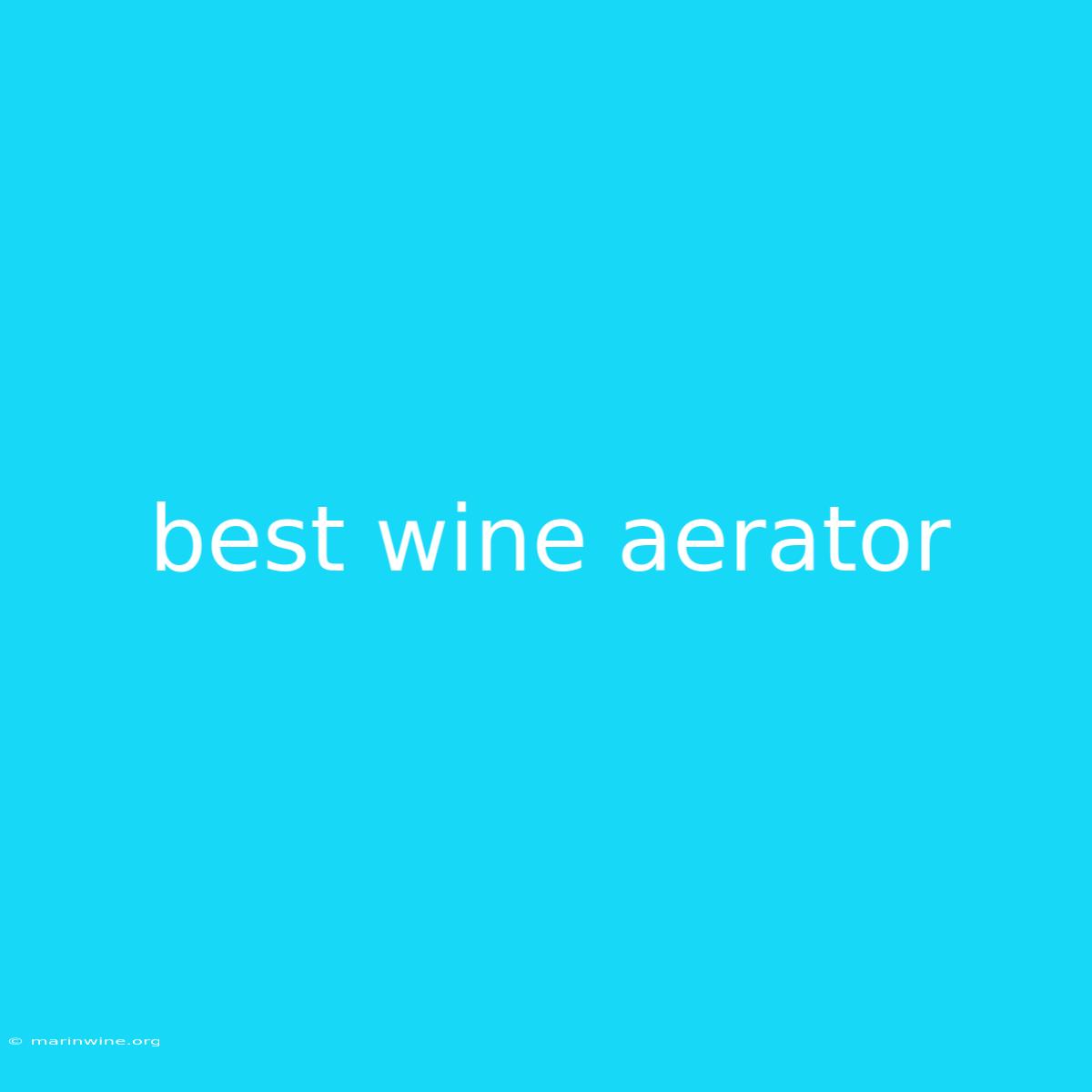Uncorking the Best: A Guide to Wine Aerators
Have you ever taken a sip of red wine that tasted flat and underdeveloped? Or maybe the bouquet wasn't as complex as it should be? The culprit might be a lack of oxygen. That's where a wine aerator comes in. These handy tools help your wine "breathe" and unlock its full potential. But with so many options available, choosing the best wine aerator can be overwhelming.
This comprehensive guide will explore the world of wine aerators, comparing different types, highlighting key features, and helping you find the perfect one for your wine-loving needs.
Why Aerate Wine?
Wine aeration is the process of exposing wine to oxygen, which helps it soften tannins, open up flavors, and release aromas. This process is especially important for young red wines, which can benefit from a little time to "breathe" before being enjoyed.
Types of Wine Aerators
There are three main types of wine aerators available:
- Decanters: These classic glass vessels have a wide opening and a narrower neck, allowing wine to be poured in and then slowly release its aromas as it sits. Decanters are beautiful and make a statement on the table, but they can be bulky and take longer to aerate wine.
- Pour-Through Aerators: These devices are designed to aerate wine as it is poured from the bottle into a glass. They come in various shapes and sizes, but the most common are funnel-shaped with a mesh or perforated base. Pour-through aerators are quick and easy to use, but they can sometimes reduce the volume of wine poured due to the aeration process.
- Handheld Aerators: These compact and portable aerators usually have a small opening and a built-in pump. You simply insert the aerator into the bottle and pump the air into the wine. Handheld aerators are ideal for travel and for aerating small quantities of wine.
What to Consider When Choosing a Wine Aerator
- Material: Wine aerators can be made from various materials such as glass, crystal, acrylic, stainless steel, and even bamboo. Consider your personal preferences and the style of your wine glasses.
- Aeration Time: Decanters typically require longer aeration times than pour-through aerators or handheld devices. Choose an aerator that best suits your desired level of aeration and how long you are willing to wait before enjoying your wine.
- Ease of Use: Some aerators require more steps or maintenance than others. Consider how easy it is to use and clean the device.
- Price: Wine aerators range in price from affordable options to high-end models. Choose one that fits your budget and your level of wine enjoyment.
Top-Rated Wine Aerators
Here are a few of the top-rated wine aerators on the market:
- Vinturi Wine Aerator: This popular pour-through aerator features a unique design that mixes air and wine effectively. It's affordable and easy to use.
- Aerator Pro by Wine Enthusiast: This handheld aerator comes with a stylish case and is perfect for traveling. It's designed to aerate wine quickly and efficiently.
- Riedel Decanter: Riedel is a renowned glassmaker known for its high-quality decanters. Their decanters come in various styles and sizes, catering to different wine types and budgets.
Conclusion
Choosing the best wine aerator is a personal decision based on your preferences, wine choices, and lifestyle. By considering the factors outlined above, you can find the perfect tool to enhance your wine experience and unlock the full potential of your favorite bottles. So uncork your next bottle and discover the magic of a well-aerated glass of wine!

